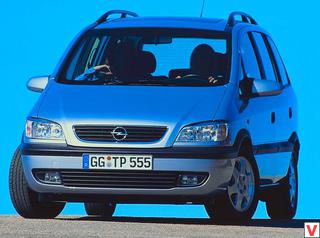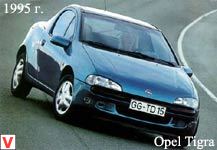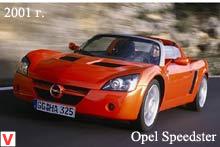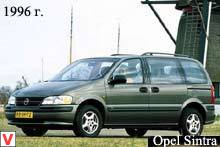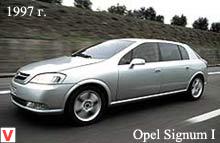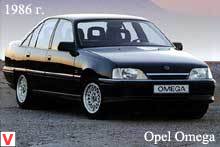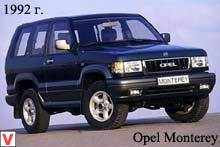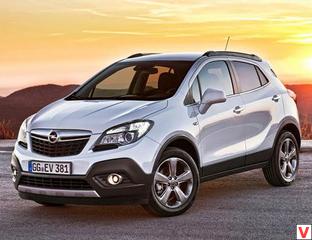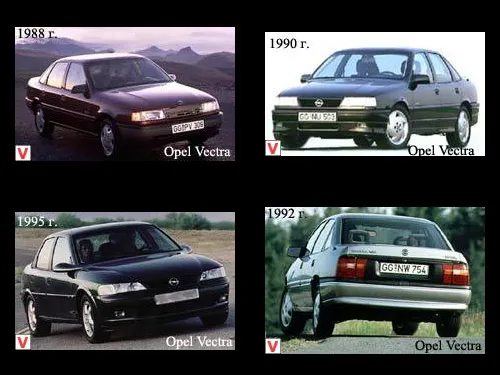
In 1988, the Opel Vectra replaced the outdated Opel Ascona. The first generation of this now very popular car is usually denoted by the “A” index. The car immediately gained popularity among drivers and became the best-selling Opel brand. Creating Opel Vectra, the designers paid great attention to the strength of the body. In addition, it has excellent corrosion resistance.
The Vectra A was produced with a four-door sedan and a five-door hatchback with a transverse engine. Cars were offered with front or all-wheel drive. Vectra with front wheel drive is a completely traditional design for cars of the 80s. The front suspension is of the McPherson type, the rear is with linked trailing arms.
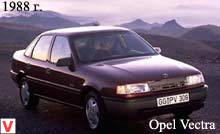
They are rigidly connected by a transverse beam of steel V-shaped profile, which, working in torsion, helps the anti-roll bar. So that the loading surface of the boot floor was wide enough and low, the suspension arms are lowered below the axles of the wheels, where they are supported by barrel springs of a very small height. The main advantage of this scheme is a roomy trunk.
For the most part, the Vectra A is equipped with 5-speed gearboxes, but there are also versions with 4-speed and automatic ones. At the end of 1989, all-wheel drive versions of the 4x4 and 2000 4x4 were launched, which were equipped with engines of 1.8 and 2 liters, respectively. However, differing in transmission and rear suspension, being more expensive and slightly more gluttonous, all-wheel drive Vectra did not enjoy great success in Europe. In 1990, the Vectra GT hatchback appeared. On this model, put the gearbox with sports gear ratios, sports suspension, sports facilities and more powerful engines. In the fall of 1990, the Vectra 2000 16V was released.
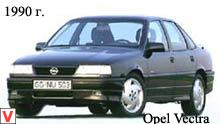
Equipped with a powerful 150-horsepower sixteen-valve engine. In 1992, there is a minor update of the model. Cars with body-colored bumpers and mirrors, a modified grille and other features that distinguish the updated models from previous versions came off the conveyor.
Two new engines have appeared: the V-shaped “six” 2.5 l, which fully complies with the Euro II environmental standards, and the 2-liter turbo engine. In 1994, to the existing modifications - GL, GLS, GT and CD were added more expensive: "CD Diamant", "Special", "Sport", V6 and the luxury model CDX. In total, more than 2 million copies of Vectra A. were produced. In 1995, the new, second in a row, Opel Vectra generation with an index B. The novelty was introduced in three versions at once - with sedan, hatchback and station wagon. The power unit Vectra In the gasoline engine 2.0 16V series Ecotec.
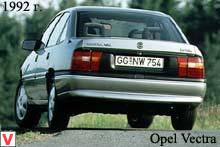
Ecotec technology (economy / ecology / technology) ensures the quality and reliability of the engine. The exterior of this generation was not very different from the previous generation. A characteristic feature of this generation is the extended standard equipment of the car.
In terms of its design and the Vectra B technical solutions used for the first time in 1995, it will still be among the market leaders for a long time. In 1999, Vectra underwent face lifting. Updated front / rear bumpers, mirrors and taillights. The ergonomic driver seat satisfies the most exquisite taste. The height-adjustable steering wheel, trimmed with leather, in combination with the height-adjustable driver's seat, allows you to choose the most comfortable position.
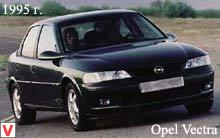
The interior of the cabin is made in a single color scheme. The onboard computer display is located so that it is constantly in the field of view of the driver. An efficient heating and air conditioning system will create the desired coolness in summer and cozy warmth in winter. Allergies will appreciate the ventilation system filter, which is able to trap pollen. Safety of the driver and passengers is provided by a reinforced structure with side impact beams that absorb impact energy during body deformations. Additional safety for the driver is provided by a telescopic steering column, as well as a suspension of brake and clutch pedals, which are disconnected in a collision.
Seat belts with a pyrotechnic device are tensioned when struck on the shoulders and belt at the same time. Front airbags are triggered by a multi-channel sensor system. The rear seats are equipped with 3-point seat belts and adjustable head restraints, which ensures the safety of passengers. Equipped with 15-inch wheels and gas-filled shock absorbers, which contributes to the smoothness of the course. The advantages of the Opel Vectra B are a modern, economical engine, excellent suspension, clear and sensitive steering. It remains to add that the second generation was able to fully replicate the success of its predecessor.
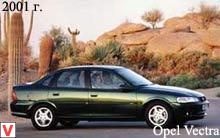
Following clear trends in the automotive market, and in order to remain competitive in 2002, Opel introduced the third generation to the world with the C index. It is a completely new car designed specifically for the driver using the latest technology, a high level of comfort and a fairly spacious interior. Opel Vectra C has a completely new design, in which Opel specialists tried to combine the family features with the fashionable style of New Edge. The car is equipped with an interactive management system IDS (Interactive Driving System). Equipped with a new 5-speed automatic transmission with the “Quick Select” quick shift function.
The front of the car has a McPherson type suspension, the rear has a multi-link independent. The suspension has a lot of aluminum parts, which significantly reduce its weight. The brakes have an electro-hydraulic drive with 4-channel ABS and brake control during cornering (CBC) and force redistribution (EBD). As a result, the car is easy to drive and extremely stable on the road.
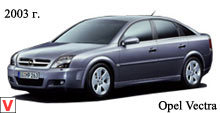
To improve communication with the road, the third generation ESP Plus stabilization system is also installed. It activates the brakes on three wheels at once, which makes stabilization more effective. In comparison with the previous model, the body stiffness increased by 62%. Also, the car became lower and wider, which made the interior more spacious. As a consequence, the increase in the wheelbase to 2.7 m. Despite the increase in size, the body has excellent aerodynamic characteristics (drag coefficient - 0.28).
The salon has excellent sound and sound insulation. Vectra C is equipped with all the necessary auxiliary systems, for example, electronic climate control, a tire pressure sensor, a rain sensor, the Park Pilot parking system, etc. The passive safety system includes all sorts of airbags, which are separated at the collision of the pedal and improved head restraints.
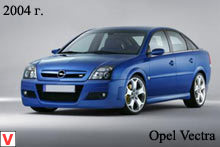
Vectra C can be bought with one of three body options: sedan, hatchback and station wagon. The interior is very pleasant, although it does not shine with special designer delights. Here, at the head of all put functionality and practicality. Diesel engines are also provided, three to choose from: 2 liters of 101 hp; 2.2 liter capacity 125 hp and a 3.0 liter V6, with a capacity of 177 hp. The new station wagon is built on a Vektra platform extended by 130 mm. Due to this, the rear passengers wagon got more legroom, and the maximum volume of the cargo compartment was 1,850 liters.
We also note that Opel engineers have developed the FlexOrganizer system, which with the help of a set of grids and folding partitions allows you to organize the cargo compartment space. Management of the trunk lid is carried out remotely. The seat of the middle passenger in the back seat for an additional fee may be occupied by the Travel Assistant system. It includes two folding tables, a couple of 12 V sockets, ashtrays, cup holders, a cooled beverage box, and a place for a DVD player. At the buyer's choice, seven engines are offered: four petrol and three turbodiesels with a capacity from 100 to 211 hp.
Among the power plants are three new items that the Signum hatchback has got: a gasoline engine with 2.2 liter direct injection fuel (155 liters). p.), a two-liter gasoline turbo engine (175 hp) and a three-liter diesel engine V6 CDTI (177 hp). The wagon is equipped with the latest generation ESP Plus Stability System and the AFL Adaptive Lighting System. The safety of passengers in the event of an accident is provided by a rigid cage design of the cabin, front and side inflatable cushions, as well as inflatable “curtains”.
